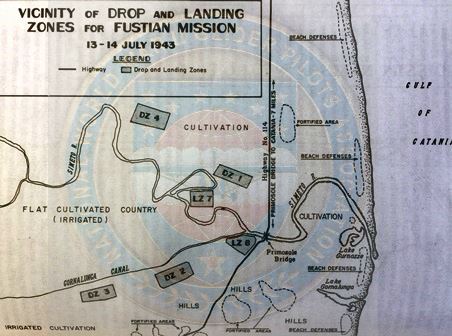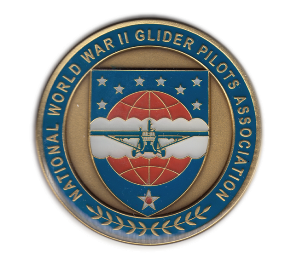|
Video Courtesy of National Archives / NWWIIGPA collection Letter, from glider pilot Michael J.Samek to Mrs Yates explaining her nephew's death in the Ladbroke Operation. | |
SICILY - July 9, and July 13, 1943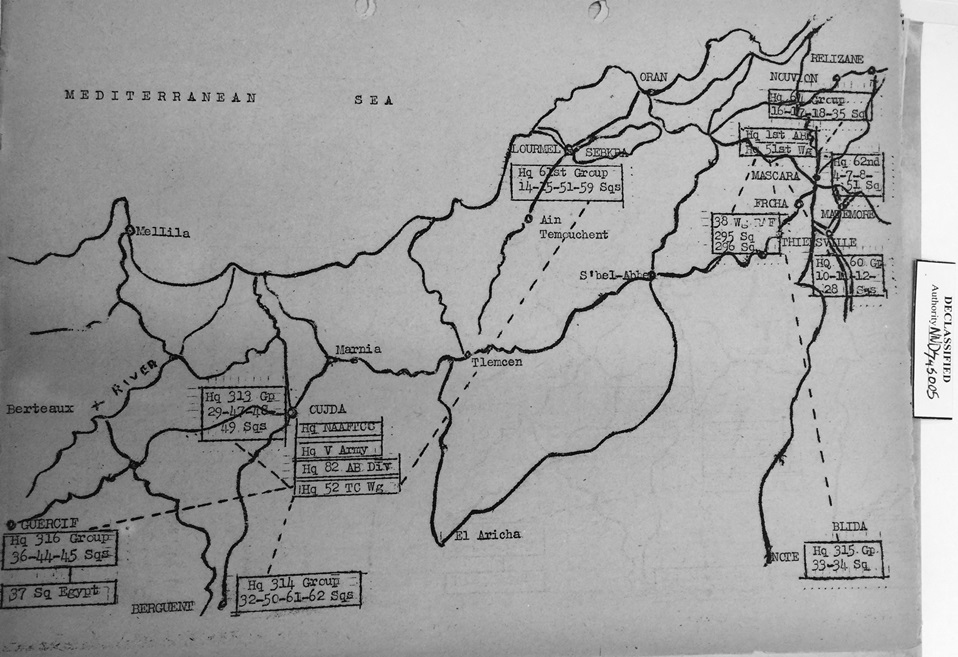 Troop Carrier Locations in North Africa You will not find too many books or articles about the glider missions for Sicily that mention American glider pilots participating in this British operation. If they are mentioned the information is often not all there or is incorrect. It is not even mentioned in the majority of the British historical documents. To the historians and the planners it was non-consequential. But in fact, twenty-six (26) American glider pilots participated in the two British glider missions for Sicily. These missions were; LADBROKE, the largest, with six (6) lifts and FUSTIAN consisting of two (2) lifts. LADBROKE was the worst disaster for glider pilots during the war. Of the hundred and forty-four (144) gliders that were flown in this British combat mission, codenamed LADBROKE, one hundred and thirty-six (136) were CG-4A gliders. Only forty-nine (49), fewer than half, made land fall and completed their objective. Sixty-eight (68) of the CG-4As landed in the Mediterranean. Six hundred and five (605) officers and men were lost, three hundred and twenty-six (326) of those presumed to have drowned. Of the twenty-two (22) Americans; three (3) made land and nineteen (19) landed in the sea. five (5) of those American glider pilots drowned. (Note one Glider Pilot, Tracy H JACKSON, was an observer on a C-47 that was shot down, totalling six (6) Glider Pilots in all.) The shortest time in the water was 7 hours, the longest being 10 hours. Although this accounting focuses on the Americans who flew operation LADBROKE and FUSTIAN it is in memory of not only the American glider pilots but for all the glider pilots who so bravely flew gliders in the Sicily operation. It was the embodiment of Alfred, Lord Tennyson’s words, Into the Valley of death. LADBROKE - British Glider Operation for the invasion of Sicily, 9 July 1943Operation Ladbroke, the invasion of Sicily, was a nighttime British glider operation with glider pilots from the British Glider Pilot
Regiment flying American Waco CG–4A gliders, with 22 volunteer American glider pilots flying as copilots in mission LADBROKE.
This was unprecedented since night glider assaults were not part of British airborne doctrine.
Major General Matthew B. Ridgway, commander of the 82nd Airborne Division, cabled Brigadier
General Maxwell Taylor in North Africa before the scheduled mission, urging him to persuade General Eisenhower’s planners to change the mission
from night to early dawn. His plea was denied. By 13 June 1943, 346 of the 500 CG–4As shipped to North Africa that March had been assembled by glider
pilots and others. Only 136 of the 360 were used for Operation Ladbroke that also included 8 British Airspeed Horsa gliders, 111 C–47s, 25 British
Albemarles and 8 Halifax bombers as tow planes.
In spite of the many difficulties encountered and the casualties incurred the objectives were taken and the mission considered a success. --Leon B Spencer POINTING THE FINGER:In his report to General Eisenhower, British General ’Boy‘ Browning placed all of the blame on the American Troop Carrier crews. Shama 20.
More information on this can be found at "blame on American Troop Carrier crews" www.operation-ladbroke.com/tugs-to-blame-for-releasing-gliders-in-sea-operation-ladbroke-sicily/. However, the Planners of Operation Ladbroke had set the stage for the mistakes. There were mandates and other circumstances which contributed to the disaster of LADBROKE:
Lt. Col Chatterton, Commanding Officer of the British Glider Pilot Regiment, defended the glider pilots in the report titled Summary of Ladbroke dated 20 July 1943.
Lt Col. Chatterton’s remarks on the glider pilots were:
But in his book The Wings of Pegasus he reverted to laying the
blame on the glider pilots. FUSTIAN - Second British Glider Operation for the invasion of Sicily, 13 July 1943 FUSTAIN was a relatively small glider mission. Nineteen gliders, eight WACO [CG-4A] and eleven Horsa gliders were used. They were delivering four 6 pounders and their crews from the 1st Airlanding Anti Tank Battery to secure the Primosole Bridge They were to land in two separate landing zones, LZ 7, 2,000 yards west of the bridge and LZ 8, 500 yards to the south. The gliders would be released at 500 feet over LAND at the LZs. Map showing locations of LZ - 7 and 8. British Glider Pilots refused to allow the USAAF tow pilots to tow their gliders do to the debacle of LADBROKE, yet, the orders that were mostly responsible for the disaster of LADBROKE were not
given to the British tow pilots. They were not ordered to release if the glider did not release, nor given orders to release 3,000 yards while over sea nor told to stay out of flak to keep planes
undamaged for the next mission. Instead, for FUSTIAN, gliders were released over land near their LZ at 500 feet. Pathfinders marked the gliders LZ with a green light for LZ7 and an orange light for LZ8.
Four American glider pilots were asked to fly the FUSTIAN mission as copilots. For further reading see references and Sources. References/Sources | |
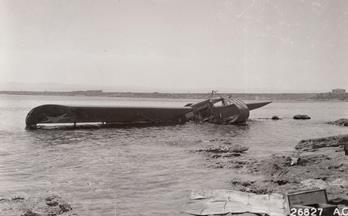
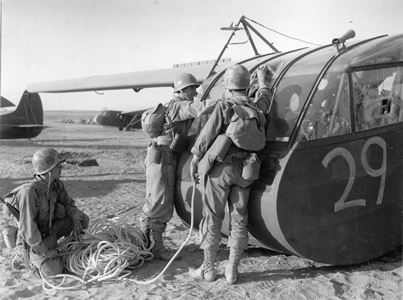
Airborne artillerymen hook tow rope to glider.
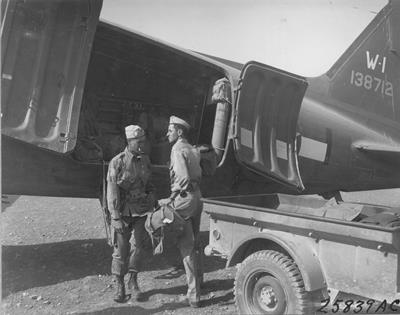
Airborne troops load kits into Troop Carrier plane.

